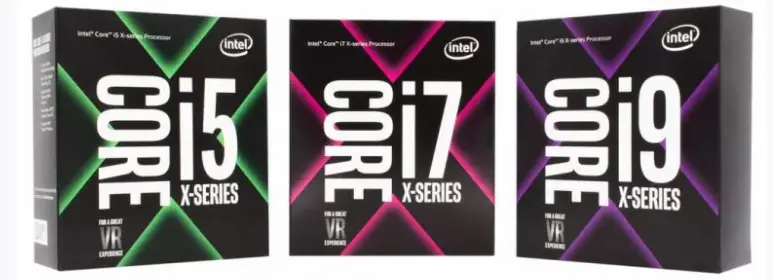Haswell (4th Gen, 2013)
Haswell marked a significant architectural update, built on the 22nm process and introducing the LGA1150 socket with 8-series chipsets. The Core i5-4670K featured 4 cores and 4 threads, while the i7-4770K added Hyper-Threading for 8 threads. Clock speeds reached 3.4–3.9 GHz. Integrated graphics were upgraded to HD 4600, and power efficiency improved over Ivy Bridge.
Broadwell (5th Gen, 2014–2015)
Broadwell transitioned to the 14nm process but saw limited release in desktop form. The i7-5775C had 4 cores and 8 threads with Iris Pro 6200 graphics, which included 128MB of eDRAM, significantly enhancing integrated graphics performance. IPC (Instructions Per Clock) improved slightly, but overall desktop impact was minor.
Skylake (6th Gen, 2015)
Skylake brought meaningful architectural improvements, new chipsets, and support for DDR4 memory. It used the new LGA1151 socket. The i5-6600K featured 4 cores at up to 3.9 GHz, and the i7-6700K added Hyper-Threading and reached 4.2 GHz. Integrated graphics were now HD 530. Power management and performance per watt saw major gains.
Kaby Lake (7th Gen, 2016)
Kaby Lake refined Skylake on the same 14nm node (14nm+), improving clock speeds and media capabilities. The i7-7700K delivered 4 cores and 8 threads at up to 4.5 GHz. Enhanced support for HEVC and VP9 decoding improved 4K streaming. Still based on LGA1151, but required 200-series chipsets for full support.
Coffee Lake (8th Gen, 2017)
Coffee Lake introduced increased core counts: i5 CPUs now had 6 cores, and i7 models had 6 cores with 12 threads. The i7-8700K reached up to 4.7 GHz. Still built on a refined 14nm process, but required new 300-series chipsets due to power delivery changes, despite using the same LGA1151 socket.
Coffee Lake Refresh (9th Gen, 2018)
The 9th Gen brought further performance gains with up to 8 cores on i7 CPUs and the debut of the i9-9900K with 8 cores and 16 threads, reaching 5.0 GHz. Hyper-Threading was disabled on i7-9700K. LGA1151 was retained, but with Z390 chipsets. This generation marked the first i9 for mainstream desktops.
Comet Lake (10th Gen, 2020)
Comet Lake scaled core counts even further. The i5-10600K had 6 cores and 12 threads, i7-10700K had 8/16, and the flagship i9-10900K offered 10 cores and 20 threads at up to 5.3 GHz. A new socket, LGA1200, and 400-series chipsets were introduced. Comet Lake was the final iteration of Skylake-based cores.
Rocket Lake (11th Gen, 2021)
Rocket Lake introduced a new Cypress Cove architecture for desktop, backported from 10nm to 14nm. Core count dropped: i9-11900K had 8 cores and 16 threads. Single-thread performance improved, and PCIe 4.0 support was added. Integrated graphics used Xe architecture. Socket LGA1200 was retained with 500-series chipsets.
Alder Lake (12th Gen, 2021)
Alder Lake marked Intel’s shift to hybrid architecture, combining Performance cores (P-cores) and Efficient cores (E-cores). The i5-12600K featured 6 P-cores and 4 E-cores (10 cores / 16 threads), while the i9-12900K had 8 P-cores and 8 E-cores (16 cores / 24 threads). Support for DDR5 and PCIe 5.0 debuted. LGA1700 was introduced alongside 600-series chipsets.
Raptor Lake (13th Gen, 2022)
Raptor Lake expanded core counts and cache. The i9-13900K had 8 P-cores and 16 E-cores (24 cores / 32 threads) with boost up to 5.8 GHz. It retained LGA1700 and added further improvements in gaming and multi-threaded performance. Compatibility with DDR4 and DDR5 was maintained, making it versatile for various system builds.
Raptor Lake Refresh (14th Gen, 2023–2024)
The 14th Gen was a refinement of 13th Gen, with higher clock speeds and better efficiency tuning. The i9-14900K reached 6.0 GHz, and the special edition 14900KS hit 6.2 GHz. Architecture remained unchanged but offered minor performance gains. Still using LGA1700 and 700-series motherboards.
Arrow Lake (15th Gen, expected 2025)
Arrow Lake is expected to debut Intel’s 20A process with RibbonFET and PowerVia technologies. It will use new Lion Cove (P) and Skymont (E) cores, along with Xe-LPG graphics. A new LGA1851 socket and 800-series chipsets will launch. Support for PCIe 5.0 and DDR5 will continue. Arrow Lake is designed to bring a significant leap in efficiency and performance.






